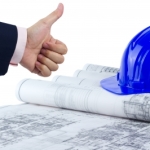I had the opportunity to participate in a facility walk through last week and I’m always amazed at how many energy saving opportunities exist in the typical commercial setting. Unless a company has maintained a long term focus to reduce energy use, waste tends to creep in due to aging of equipment or technology that has become outdated.
Our walk through was of a company who has a heightened commitment to energy efficiency. As a symbol of their green philosophy they have a company hybrid car hooked up to a charging station in the parking lot. The corporate leaders recently hired a young, energetic Sustainability Manager who has been charged with developing a plan to make their world-wide facilities more energy efficient. Needless to say the manager is faced with a daunting task and the obvious question of “where do I begin?”
The Energy Alliance Group (EAG) was invited in because of our experience with Property Assessed Clean Energy (PACE). It is interesting to note that multiple other energy experts had visited the site prior to our meeting. The company had also paid many thousands of dollars for energy audits that were now just sitting in a file.
The prior experts had offered piecemeal options or specific technologies as a solution. What the Sustainability Manager was looking for was a comprehensive plan of action. The manager had just heard about our total green renovation of an automobile dealership and thought we could help him develop a similar plan.
“Unless a company has maintained a long term focus to reduce energy use, waste tends to creep in due to aging of equipment or technology that has become outdated.”
The massive facility was built to house a manufacturing operation. When the original space was vacated the present tenants converted a large part of the wide open manufacturing facility to offices, meeting rooms and small work spaces. The original building’s infrastructure had included a hard wired energy management system that had been disabled when the new build-out occurred. It was now sitting dormant in a closet. The system was so outdated it would not make financial sense to bring it back online due to the low cost of installing new wireless energy management technology.
We started our walk through at the closet that contained the disabled energy management system. That antiquated system launched a lengthy discussion about the facilities present lighting technology. It quickly became evident that lighting was the first big energy saving opportunity!
The facility was lit by T-8 fluorescent bulbs. While still acceptable per government energy legislation, there are significantly more energy-efficient alternatives available. Many areas of the operation are automated and don’t need to be lit yet the lights are always on! Occupancy sensors or automated controls were not in existence. Most of the lights were turned on and rarely shut off, even when the building was unoccupied. The rationale for leaving lights on was the facilities video surveillance required illumination to ensure image quality – a problem easily corrected with motion sensors.
As the tour progressed it became apparent that energy was being wasted at almost every stage of the operation. The HVAC units did not communicate with each other, and in many cases were “fighting” adjacent zones. The units didn’t have regular maintenance schedules and the efficiency of unclean coils or filters quickly degrades and energy use ratchets up.
Water was used abundantly in various operations and simply dumped into the sewer when it could be reused or recycled to reduce future water bills. Abundant heat was being vented outside while there are systems that could capture it and reuse it to cut energy bills. The compressed air system leaked at almost every station causing the compressors to run almost constantly. A huge waste of energy that is easily fixed!
Suffice it to say that potential energy savings met us at every turn during our walk through. When a company commits to energy efficiency, and develops a comprehensive plan to cut energy waste, the results can be quite remarkable. As we have witnessed on many occasions, the cost of becoming energy efficient can often be paid for out of the money that is no longer being wasted on unneeded energy.
When EAG gets to work with companies who have a heightened commitment to energy efficiency, it’s always exciting to see the dramatic changes that take place! I look forward to detailing those changes as the facility we toured last week incorporates them into their operation!
Are you interested in becoming more Energy Efficient? The Energy Alliance Group of Michigan has compiled a free report entitled Ten Questions to Ask Before an Energy Efficiency Upgrade! If you would like a copy of the report e-mailed to you simply click HERE.


Did you perform an unbiased audit or one supported by your local utility? What is their annual realization rate, proposed versus realized? The national average is around 60%, when pushed for honesty.
Brad, this was not an audit. This was only our first step in working with the client. We walked through their facility and listened to all the concerns they have about the way their current operation is using energy. At the corporate level they have a desire to become more sustainable and we were asked to participate in that process.